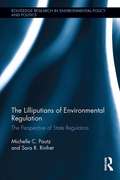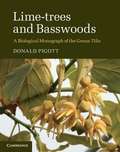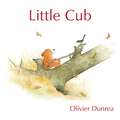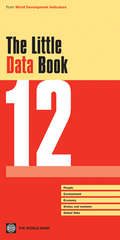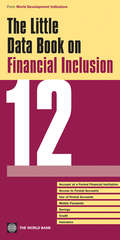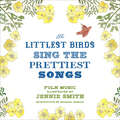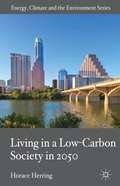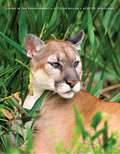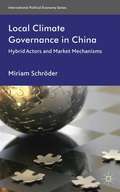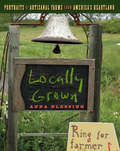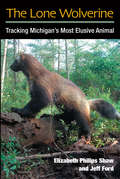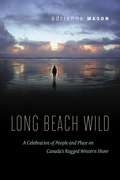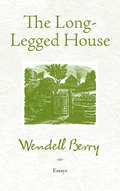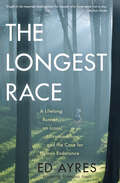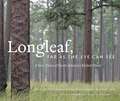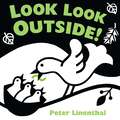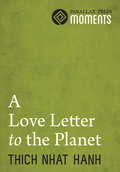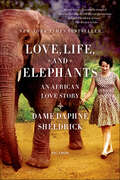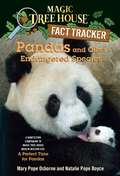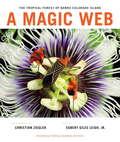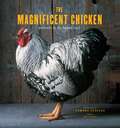- Table View
- List View
The Lilliputians of Environmental Regulation: The Perspective of State Regulators (Routledge Research in Environmental Policy and Politics)
by Michelle C. Pautz Sara RinfretWhen we think about environmental policy and regulation in the U.S., our attention invariably falls on the federal level and, more specifically, the U.S. Environmental Protection Agency. Although such a focus is understandable, it neglects the actors most responsible for the implementation and maintenance of the nation's environmental laws - the states. Recognition of the importance of the states still ignores an even smaller subsection of actors, inspectors. These front-line actors in state environmental agencies are the individuals responsible for writing environmental rules and ensuring compliance with those rules. They play an important role in the environmental regulatory state. With data collected from more than 1,200 inspectors across 17 states, Michelle C. Pautz and Sara R. Rinfret take a closer look at these neglected actors to better understand how environmental regulators perceive the regulated community and how they characterize their interactions with them. In doing so, they explore the role these front-line actors play, what it is like to be them, what they think of their place in the environmental regulatory system, and how they interact with the regulated community. An original, timely and unmatched volume advancing the debate on the future of environmental regulation in the U.S.
Lime-Trees and Basswoods
by Donald PigottLime trees (Tilia spp. ) are widely distributed and locally important members of northern temperate broad-leaved forests. In marked contrast to the largely uniform morphology of the genus its taxonomic treatment has become increasingly confused and controversial, with over one hundred species and numerous subspecies described. Using extensive data from field studies of natural populations around the world, this book clarifies the situation, proposing a revised taxonomy of 23 species and 14 subspecies. Detailed descriptions are provided for all recognised taxa and are accompanied by illustrations. Data from herbaria and cultivated trees are used to extend the analyses where appropriate and type specimens are included to stabilise nomenclature. Lime tree ecology is also considered, with an exploration of experimental and analytical data on regeneration, growth and reproduction in relation to climate and soils. Additional material includes a glossary of botanical terms and appendices of herbarium codes and relevant physical concepts.
Little Acorn Grows Up
by Edward GibbsLittle Acorn Grows Up is a sweet, simple tale that explores themes of growing up and nature from author/illustrator Edward Gibbs.In this companion book to Little Bee, Little Acorn proves that great things come in small packages as it grows from a tiny nut to a big tree that shelters its forest friends. Poignant and thoughtful, this book features Read Aloud functionality [where available].
Little Bee
by Edward Gibbs Samantha BergerAll the animals are running away, but what are they afraid of? Find out in this action-packed book that will have all little children wanting to turn the pages and join in. It's simple, it's fun, it's thought provoking, and the surprise ending brings it right back to the beginning - to be enjoyed all over again! Graphic designer and illustrator Edward Gibbs has always sought to communicate meaningful ideas in the simplest way. With a seemingly effortless touch, in this book and its companion The Acorn, he introduces educational themes and concepts (food chains, fear, ecosystems) in a visual, fun, and satisfying romp for the very young.
Little Cub (Little Cub)
by Olivier DunreaA darling companion to Old Bear and His Cub from the New York Times bestselling creator of the Gossie booksWhat's an Old Bear to do when he finds a Little Cub all alone and afraid of the dark? Adopt him, of course! And help him try to get over his fears. In this book we see the father and son from Old Bear and His Cub meet for the first time--and grow to love one another.With the same bold art and humorous twist on parenting, Olivier Dunrea's tumbling bears will melt your heart and show how strong the bond is between any father and son pair.
The Little Data Book 2012
by The World BankThis pocket-sized reference on key development data for over 200 countries provides profiles of each country with 54 development indicators about people, environment, economy, technology and infrastructure, trade, and finance.
The Little Data Book on Financial Inclusion 2012
by World BankThe Little Data Book on Financial Inclusion 2012 is a pocket edition of the Global Financial Inclusion Index ("Global Findex") database providing country-level indicators on the use of formal bank accounts, payments behavior, savings patterns, credit patterns, and insurance decisions. It provides data on financial inclusion by key demographic characteristics--gender, age, education, income, and rural or urban residence. The book includes summary pages for 147 economies and regional and income group averages.
The Littlest Birds Sing the Prettiest Songs: Folk Music
by Michael Hurley Jennie SmithOur love affair with folk songs runs as deep as the enduring power of music, nature, creativity, and the longings of the human heart. Artist Jennie Smith celebrates the tradition with her illustrated renderings of thirteen soulful songs, including time-honored Scottish ballads, classics by the likes of the Carter Family, contemporary favorites by Gillian Welch, and more. Smith's art--hopeful, sincere, and delicate--adds an unexpected and charming dimension to a familiar genre. With a foreword from contemporary folk legend Michael Hurley, complete lyrics, and playable tablature or sheet music for each song, this is a keepsake collection for the whole family to treasure.
Living in a Low-Carbon Society in 2050
by Horace HerringCombining theory, case studies and speculative fiction, a range of contributors, from leading UK academics to pioneering renewable activists, create a compelling picture of the potential perks and pitfalls of a low carbon future.
Living in the Environment: Principles, Connections, and Solutions
by G. Tyler Miller Scott E. Spoolman Jr.Learn how to make a difference in our environment! Using sustainability as the central theme, this current and thought-provoking book provides you with basic scientific tools for understanding and thinking critically about the environment and the environmental problems we face. Updated with new information, art, and "Good News" examples, this engaging book offers vivid case studies and hands-on quantitative exercises. The concept-centered approach transforms complex environmental topics and issues into key
Living in the Environment (17th Edition)
by G. Tyler Miller Scott E. SpoolmanThis book provides you with basic scientific tools for understanding and thinking critically about the environment and the environmental problems we face.
Local Climate Governance in China
by Miriam SchröderBased on the empirical analysis of the effectiveness of four provincial centres for the diffusion of the Clean Development Mechanism (CDM), a market mechanism for emission reductions, Miriam Schr#65533;der scrutinizes the strengths and weaknesses of hybrid actors' performance on the local Chinese carbon market.
Locally Grown
by Anna BlessingThis beautiful new book by 30-year-old writer and photographer Anna H. Blessing introduces readers to the story of the modern heartland farm. The book explores how sustainable practices--and close ties to high-profile chefs and restauranteurs--have propelled the "locally grown" culinary movement into a central feature of life in major cities like Chicago. Blessing lays out the rich histories of 25 midwestern farms through beautiful photography, fascinating anecdotes from farmers and chefs, and up-close looks at what makes each farm so unique.Interest in sustainable farming has been growing rapidly across the country and around the world, emphasizing locally produced and grown foods in place of the mass-marketed offerings from corporate consortia. When inhabitants of major cities choose to purchase food raised in nearby farms, they not only support vital satellite economies, but also improve the social and ecological quality of life along with the environmental sustainability of the world around them.Now there are also innumerable top-tier dining establishments, led by esteemed chefs like Charlie Trotter and Paul Kahan, who scour farmers markets for natural ingredients and develop personal business relationships with small-time farmers to supply their restaurants with the best and most sustainable foods. Locally Grown shows how both long-standing and newly founded farms, along with urban farms and metropolitan nonprofit organizations like Growing Power and City Provisions, are boosting the sustainable food movement throughout Chicago and its neighborhoods. Each chapter profiles a different farm, outlining locale, scale, production, and inner workings while also revealing the captivating backgrounds of each farmer. Blessing shows how each farm and farmer are making efforts to improve sustainability, and describes the behind-the-scenes practices that have made locally grown food an increasingly important part of America's food culture.Contributions from each farmer, and from chefs they work with, are included in every chapter, lending an intimate feel to Locally Grown--recipes, how-to's and Q&As that together create a riveting account of the rapidly changing world of modern farming. Beyond profiling these Midwest farms, Locally Grown points out the best places to find, buy, and eat sustainably grown foods, as well as details on visiting the farms.
The Lone Wolverine: Tracking Michigan's Most Elusive Animal
by Jeff Ford Elizabeth Philips ShawIt began in late winter of 2004. Almost 100 years had passed since the last spotting of a wild wolverine in Michigan when coyote hunters caught a glimpse of one of the animals in a frozen farm field in the northern thumb region. For the next six years, Jeff Ford, a local science teacher and amateur naturalist, devoted himself to locating and filming the wolverine that had unexpectedly and inexplicably appeared in the Wolverine State. By the time hikers found the animal dead in early 2010, Ford had taken hundreds of rare live action photos and shot numerous hours of video, with the story of the "Wolverine Guy" attracting national attention through countless newspaper and magazine articles and appearances on Animal Planet and PBS Nature. This is the tale of Ford's quest as he uncovered answers to mysteries surrounding the animal's territory and movement patterns, while sparking a flurry of controversy surrounding the elusive predator's origin, much of which remains unresolved today. It's an intimate look at research in the raw, from DNA samples stuck on barbed wire to a sophisticated, motion-sensing infrared camera unit strategically placed to observe nocturnal behavior. The Lone Wolverine brings to vivid life this unforgettable piece of American wildlife lore, using candid interviews, public records, and Ford's own vast storehouse of notes, personal writings, correspondence, and images, offering an extraordinary chronicle of a wild wolverine in its natural habitat, at play and in fierce competition for food and survival. This is a wildlife detective story, recounting years of study and fierce debate as researchers pondered the riddles of Michigan's last wolverine---her origins, habits, and ultimately the cause of her untimely death.
Long Beach Wild
by Adrienne MasonEach year, more than a million people visit the spectacular sweep of sand that stretches along Vancouver Island's west coast between Tofino and Ucluelet to watch waves crash ashore on a series of beaches-essentially one long beach separated by small rocky headlands, a shoreline steps away from howling wolves and towering red cedars.In Long Beach Wild: A Celebration of People and Place on Canada's Rugged Western Shore, local resident Adrienne Mason uses her intimate knowledge of the area and a selection of historic and contemporary photos to explore the region's rich natural and cultural history.Mason shows how Long Beach was shaped by many forces, including volcanoes, glaciers, and torrents of water. She describes how the deposits of gravel and silt that this tumult left behind allowed offshore kelp beds and sea otters to thrive and supported the growth of countless other organisms, from lichens and ferns to waterfowl and deer.She also describes how First Nations people found inspiration and sustenance in the area for thousands of years, hunting whales on the open ocean using harpoons with mussel-shell blades and great lengths of cedar bark rope.As well as describing the traditions of the area's First Nations, Mason
The Long-Legged House: Essays
by Wendell BerryFirst published in 1969 and out of print for more than twenty-five years, The Long-Legged House was Wendell Berry's first collection of essays, the inaugural work introducing many of the central issues that have occupied him over the course of his career. Three essays at the heart of this volume-"The Rise," "The Long-Legged House," and "A Native Hill" -are essays of homecoming and memoir, as the writer finds his home place, his native ground, his place on earth. As he later wrote, "What I stand for is what I stand on," and here we see him beginning the acts of rediscovery and resettling.
The Longest Race: A Lifelong Runner, An Iconic Ultramarathon, and the Case for Human Endurance
by Ed Ayres“It soon becomes clear that this book isn’t just about an athletic race. It’s also about the human race” (Bloomberg Businessweek). Having run in more than six hundred races over the span of fifty-five years, Ed Ayres is a legendary distance runner—and this book is his urgent exploration of the connection between individual endurance and a sustainable society. The Longest Race begins at the starting line of the 2001 JFK 50 Mile—the nation’s oldest and largest ultramarathon and, like other such races, it’s an epic test of human limits and aspiration. At age sixty, his sights set on breaking the age-division record, Ayres embarks on a course over the rocky ridge of the Appalachian Trail, along the headwind-buffeted towpath of the Potomac River, and past momentous Civil War sites such as Harpers Ferry and Antietam. But even as Ayres focuses on an endurance runner’s familiar concerns—starting strong and setting the right pace, controlling his breathing, overcoming fatigue, and staying mindful of the course ahead—he finds himself as preoccupied with the future of our planet as with the finish line. A veteran journalist and environmental editor, Ayres reveals how the skills and mindset necessary to complete an ultramarathon are also essential for grappling anew with the imperative to endure—not only as individuals, but as a society—and not just for fifty miles, but over the real long haul, in a unique meditation that “ought to be required reading even for people who have never run a step” (The Boston Globe). “He seamlessly moves between discussing running to exploring larger life issues such as why we run, our impact on the environment, and the effects of the nation’s declining physical fitness . . . Thought provoking.” ―Booklist “To read this book is to run alongside a seasoned athlete, a deep thinker, and a great storyteller. And Ayres doesn’t disappoint: He is the best kind of running companion, generously doling out hilarious stories and hard-won insights into performance conditioning and the human condition. His lifetime of ultra-running and environmental writing drive his exploration of what keeps us running long distances―and what it might take to keep the planet from being run into the ground.” ―Nature Conservancy magazine
Longleaf, Far as the Eye Can See
by John C. Hall Bill Finch Beth Maynor Young Rhett JohnsonLongleaf forests once covered 92 million acres from Texas to Maryland to Florida. These grand old-growth pines were the "alpha tree" of the largest forest ecosystem in North America and have come to define the southern forest. But logging, suppression of fire, destruction by landowners, and a complex web of other factors reduced those forests so that longleaf is now found only on 3 million acres. Fortunately, the stately tree is enjoying a resurgence of interest, and longleaf forests are once again spreading across the South. Blending a compelling narrative by writers Bill Finch, Rhett Johnson, and John C. Hall with Beth Maynor Young's breathtaking photography, Longleaf, Far as the Eye Can See invites readers to experience the astounding beauty and significance of the majestic longleaf ecosystem. The authors explore the interactions of longleaf with other species, the development of longleaf forests prior to human contact, and the influence of the longleaf on southern culture, as well as ongoing efforts to restore these forests. Part natural history, part conservation advocacy, and part cultural exploration, this book highlights the special nature of longleaf forests and proposes ways to conserve and expand them.
Look Look Outside
by Peter LinenthalA black-and-white board book just right for baby's eyes There's a world of wonder outside baby's window in this fourth board book in the popular Look, Look! series. In striking black-and-white images perfect for infant eyes, ladybugs fly, cars zoom, and clouds float. With bold, simple text and art, this board book makes an ideal learning experience for very young babies and a perfect shower gift.
A Love Letter To The Planet
by Thich Nhat HanhA passionate appeal for ecological mindfulness and strengthening our relationship to the Earth. Based on the best selling The World We Have.
Love, Life, and Elephants: An African Love Story
by Daphne SheldrickDaphne Sheldrick, whose family arrived in Africa from Scotland in the 1820s, is the first person ever to have successfully hand-reared newborn elephants. Her deep empathy and understanding, her years of observing Kenya's rich variety of wildlife, and her pioneering work in perfecting the right husbandry and milk formula have saved countless elephants, rhinos, and other baby animals from certain death. In this heartwarming and poignant memoir, Daphne shares her amazing relationships with a host of orphans, including her first love, Bushy, a liquid-eyed antelope; Rickey-Tickey-Tavey, the little dwarf mongoose; Gregory Peck, the busy buffalo weaver bird; Huppety, the mischievous zebra; and the majestic elephant Eleanor, with whom Daphne has shared more than forty years of great friendship. But this is also a magical and heartbreaking human love story between Daphne and David Sheldrick, the famous Tsavo Park warden. It was their deep and passionate love, David's extraordinary insight into all aspects of nature, and the tragedy of his early death that inspired Daphne's vast array of achievements, most notably the founding of the world-renowned David Sheldrick Wildlife Trust and the Orphans' Nursery in Nairobi National Park, where Daphne continues to live and work to this day. Encompassing not only David and Daphne's tireless campaign for an end to poaching and for conserving Kenya's wildlife, but also their ability to engage with the human side of animals and their rearing of the orphans expressly so they can return to the wild, Love, Life, and Elephants is alive with compassion and humor, providing a rare insight into the life of one of the world's most remarkable women.
Low-Carbon Energy Controversies
by Paul Upham Clair Gough Sarah Mander Thomas Roberts Carly McLachlan Philip Boucher Dana Abi GhanemGovernments, big business and communities are coming under increased pressure to develop low carbon energy supply technologies. Within the context of the climate change debate a delicate balance has to be reached between local environmental protection and our need for reliable low carbon energy. This books brings together ten years of research conducted by the Tyndall Centre for Climate Change Research and uses a range of case studies from carbon capture and storage to on-shore wind farms to explore the complex nature of disputes between a wide variety of stakeholder groups. Topics covered include: the importance of context the relationship between risk and trust sense of place role of the media An invaluable resource for researchers and readers in local or national government, industry or community groups who wish to deepen their understanding of controversy around low carbon technology and how to overcome it.
Magic Tree House Fact Tracker #26: Pandas and Other Endangered Species (Magic Tree House (R) Fact Tracker #26)
by Mary Pope Osborne Sal Murdocca Natalie Pope BoyceWhen Jack and Annie got back from their adventure in Magic Tree House #48: A Perfect Time for Pandas they had lots of questions. What do pandas eat? Where do they live? Why are snow leopards so scarce? How can we help? Find out the answers to these questions and more as Jack and Annie track the facts. Filled with up-to-date information, photos, illustrations, and fun tidbits from Jack and Annie, the Magic Tree House Fact Trackers are the perfect way for kids to find out more about the topics they discovered in their favorite Magic Tree House adventures.From the Trade Paperback edition.
A Magic Web
by Christian Ziegler Egbert Giles LeighThe tropical forest of Panama's Barro Colorado Island is a luxuriant community of plants and animals, pulsating with life and offering an astonishing view of nature's myriad processes. What does the forest look like? How do the activities of the forest's plants and animals create a community?In A Magic Web, photographer Christian Ziegler and evolutionary biologist Egbert Giles Leigh, Jr., invite readers to enter the marvelous world of Barro Colorado Island. This book is a unique combination of spectacular photography and clear, authoritative text written by an active scientist who has spent half a lifetime trying to understand the tropical forest. Luscious photographs of the forest reveal the wonderful diversity of its inhabitants and show many of the activities that give it its character and lend structure to its community. Drawing on decades of work on Barro Colorado Island, Egbert Leigh explains how the forest works: how plants and animals compete with but also depend on each other; how the solitary lives of cats contrast with the intricately organized lives of armies of ants; the variety of ways plants struggle for a place in the sun; and how these plants attract animals to pollenate their flowers. Finally, the book shows the importance of tropical forests to the people living near them, why they matter to the world at large, what we can learn from them, and how they differ from temperate-zone forests.Full of stunning full-color photographs accompanied by clear and accessible text, A Magic Web is a must for anyone planning to visit a tropical forest and for all those who wish they could.
The Magnificent Chicken
by Tamara StaplesWith backyard chicken keeping and urban farming at an all-time high, the proudest of purebred poultry take center stage once again in this fully revised and expanded edition of the classic The Fairest Fowl, now retitled The Magnificent Chicken. Updated with even more chickens and an enlarged resource section, this celebration of the wonder, peculiarity, and magnificence of championship chickens showcases more than 40 astonishing breeds in glamorous photos--many brand new--and informative text, while an introduction by Ira Glass explores the finer points of poultry shows and chicken portraiture.
